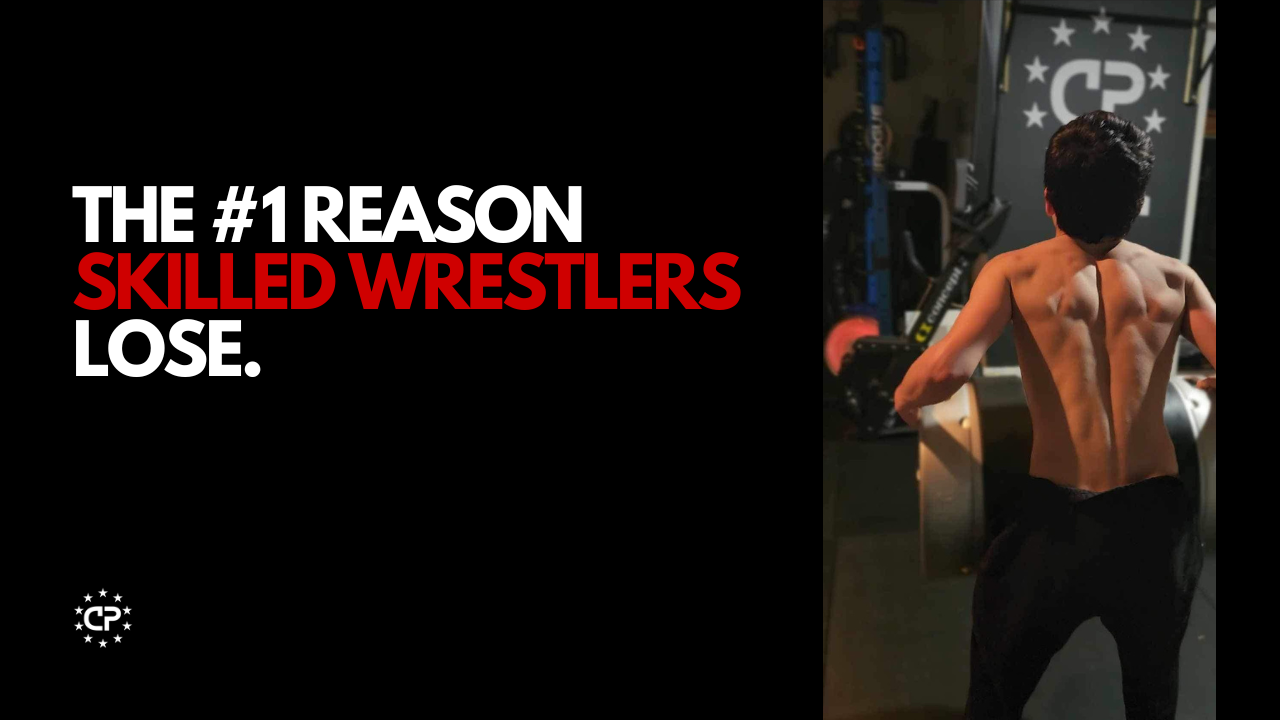The Missing Link: Why Your Wrestler's Technique is Failing on the Mat

You've watched it happen from the stands.
Your wrestler, the one with the slick double leg he's drilled a thousand times, shoots on a kid who looks like he just learned the move last week. Your wrestler gets a deep entry, his head is in the right position, and... nothing. He gets stopped dead in his tracks, his shot stalls, and he ends up in a bad scramble that drains his gas tank.
Or worse, he dominates for two periods, only to get manhandled and broken in the third by a less-skilled, but physically overwhelming opponent.
You're frustrated. You're confused. You think, "He knows the move! Why isn't it working?"
The truth is his technique didn't fail. It was unsupported.
The Lie of "More Moves"
As parents, you correctly understand that your wrestler needs to know wrestling moves to succeed. You invest in camps, clubs, and private lessons to sharpen his technique. The flawed assumption is that this is the only thing he needs.
This is the single most dangerous blind spot in youth wrestling development.
You believe that the most skilled wrestler should always win. But the mat is not a chess board. It is a physical contest governed by the unyielding laws of physics, and biology. And these laws state that there is a Performance Threshold—a minimum physical requirement of strength and conditioning—that must be met before skill can be fully expressed.
If your wrestler is below that threshold, his beautiful technique is like a Ferrari chassis with a lawnmower engine. It looks cool, but has no power.
The Physics of a Takedown: Why Strength is a Skill Multiplier
A wrestling takedown is not magic. It is a direct application of physics. The formula for force is simple: Force = Mass x Acceleration.
Your son's wrestling technique is what allows him to position his mass correctly and apply that force in the most efficient direction. But the variables of "mass" (a strong body) and "acceleration" (explosive power) are products of elite strength and conditioning.
Think of a double leg takedown. The "skill" is the footwork, level change, core posture, and head position. The strength is what allows him to generate the explosive force to accelerate through the opponent's mass and finish the shot. A wrestler with a 300lb squat can generate exponentially more finishing power than one with a 150lb squat, even if their technique is identical.
The stronger wrestler's technique works better because he has more force to apply to the equation.
Technique is the key, but strength is what gives you the power to turn the key.
The Biology of the Third Period: Why Conditioning is the Gas in the Tank
When your wrestler gasses out, it is not a failure of his heart or his will. It is a failure of his energy systems.
An explosive move, like a scramble or a powerful stand-up, is fueled by the ATP-PC system—your body's highest-octane, but most limited, fuel source. You get about 10-15 seconds of this before you have to rely on other, less powerful systems. Your conditioning level determines how big that fuel tank is and, more importantly, how quickly you can replenish it between exchanges.
When that tank runs dry, a catastrophic chain reaction occurs:
- Motor Control Fails: The signals from the brain to the muscles slow down and become less precise.
- Technique Collapses: His perfect stance gets sloppy. His hands drop. His footwork gets heavy.
- Strength Disappears: A fatigued muscle cannot contract with the same force. His shots lose their power, and his defense becomes weak.
The less-skilled wrestler with a world-class engine can keep pushing the pace, forcing the skilled wrestler to empty his tank. Once the tank is empty, the skill becomes irrelevant.
Conditioning is the gas tank. The best driver in the world can't win the race on empty.
The Performance Threshold: Where Skill Becomes Useless
This is the bottom line: for every level of competition, there is a minimum physical standard. If you are below that line, your skill cannot save you.
- If you aren't strong enough to fight out of a tough tie-up, your slick offense will never get a chance to start.
- If you don't have the endurance to maintain good position in the third period, your defensive technique will break.
- If you don't have the explosive power to finish a takedown, your perfect setup is just wasted energy.
Our entire system is built to get our athletes well above this Performance Threshold. We don't just build strength; we build the physical capacity required to allow skill to flourish under the most brutal conditions.
Technique tells your body where to go; strength and conditioning is what gets it there on time and with force.
Stop Leaving It To Chance
You would never send your son into a match without knowing the moves. Why would you send him in without the physical tools to make them work?
The frustration you feel is real, but it's also fixable. The first step is to get an honest, data-driven look at where your son's physical preparation really stands. You can't fix a problem you can't see.
I've built a tool to do just that. It's a free 5-Minute Audit that allows you to find the gaps and measure your son's numbers against elite benchmarks. Stop the guesswork. Find the missing link.
Click here to take the free Parent's 5-Minute Wrestler Audit now.
